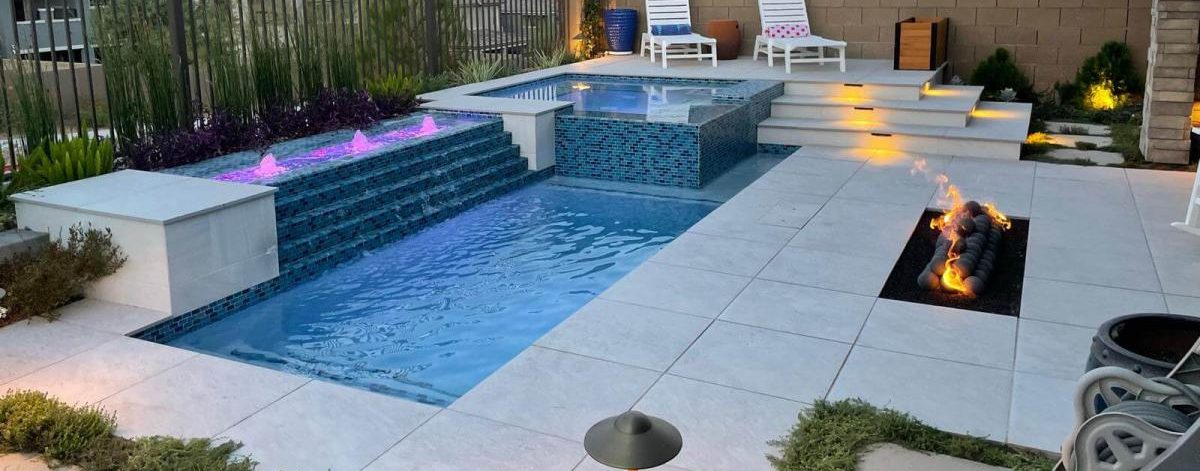Have You Ever Looked at Your Tranquil Backyard Pool and Wondered What Makes It Tick?
The intricacy might surprise you — after all, it’s not just a vast water-filled hole. Even the simplest pool is a well-crafted system that has unique parts which we will discuss below.
Why Knowing Your Pool Parts Is Important
Understanding the parts of a swimming pool not only enhances your maintenance efforts but also prolongs the life of your pool. Knowing your pool parts names can help you troubleshoot issues, making pool care a more manageable task. This knowledge can also help you communicate more effectively with pool professionals and even create your pool plans.
The Operational Parts Of A Pool
The operational parts of an inground pool consist of the pool walls and floor, the main drain, the skimmers, return jets, and the filtration system. Let’s take a closer look at these pool components using a pool parts diagram for clarity. The walls and floor form the pool’s basic structure, typically made of concrete, fiberglass, or vinyl liner. The main drain, placed at the pool’s deepest point, protects water circulation and prevents debris accumulation.
The Suction Side of Your Pool System
The suction side refers to the parts of the pool system that pull water from the pool and deliver it to the pump for filtration. This system includes the skimmer, main drain, and suction lines. The skimmer, attached to the pool’s side, removes debris such as leaves and insects that float on the water’s surface.
The suction lines, on the other hand, carry the water from the main drain and skimmer to the pump.
- Skimmer
The skimmer plays a pivotal role in keeping the pool clean. It captures floating debris before it sinks, making cleaning less labor-intensive. This component is particularly critical for outdoor pools that are prone to accumulating leaves, insects, and other outdoor debris.
- Main Drain
The main drain is another crucial component on the suction side of your pool system. It draws water from the bottom of the pool, removing heavier debris and helping circulate the water. A well-functioning main drain contributes significantly to maintaining a clean and inviting swimming pool.
- Suction Lines
Suction lines are the invisible, yet essential parts of a pool. They transport the water from the main drain and skimmer to the filtration system. Without them, the pool water would remain stagnant, leading to an unpleasant swimming environment and potential algae growth.
- The Filtration System
The filtration system is one of the key parts of a swimming pool. It consists of two main elements: the pump and the filter. If you want to learn how to build your own swimming pool, it’s one of the sections you should pay close attention to.
- The Pump
The pump acts as the heart of the pool system. It pushes water through the filter and back to the pool through return jets. This circulation process is vital to keep the water clean, clear, and chemically balanced.
- The Filter
The filter is where the actual cleaning takes place. It removes debris and contaminants from the water that the pump brings in. Depending on the type of pool, the filter can be a sand, cartridge, or diatomaceous earth (DE) filter. Each type has its advantages and maintenance requirements.
Pressure Side of Your Pool System
This component deals with the pressure generated from the pool’s pump to circulate water. The pool pump takes the water from the pool through the skimmer and main drain. This water, now filtered, is driven into the pressure side of the system, destined for a return to the pool.
- Return Lines
These pool parts guide the filtered and possibly heated water back into your pool. The water undergoes filtration and disinfection before the return lines deliver it back into the pool, ensuring a clean and safe swimming environment.
- Return Jets
Return jets are mounted on the sides of the pool. They direct the water from the return lines back into the pool, creating a circular flow. The positioning and direction of the jets are vital to efficient circulation, helping to keep the pool clean and properly mixed.
Optional Additional Equipment
The equipment isn’t necessary for your pool to function but can significantly enhance your swimming experience. A pool heater, for instance, can make swimming more comfortable by adjusting the water temperature to your liking. The pool parts diagram will show these optional components, such as lights, slides, diving boards, and automatic cleaners, which can be added to increase convenience or enjoyment.- Pool Heater
- Chemical Feeder
- Pool Cover


